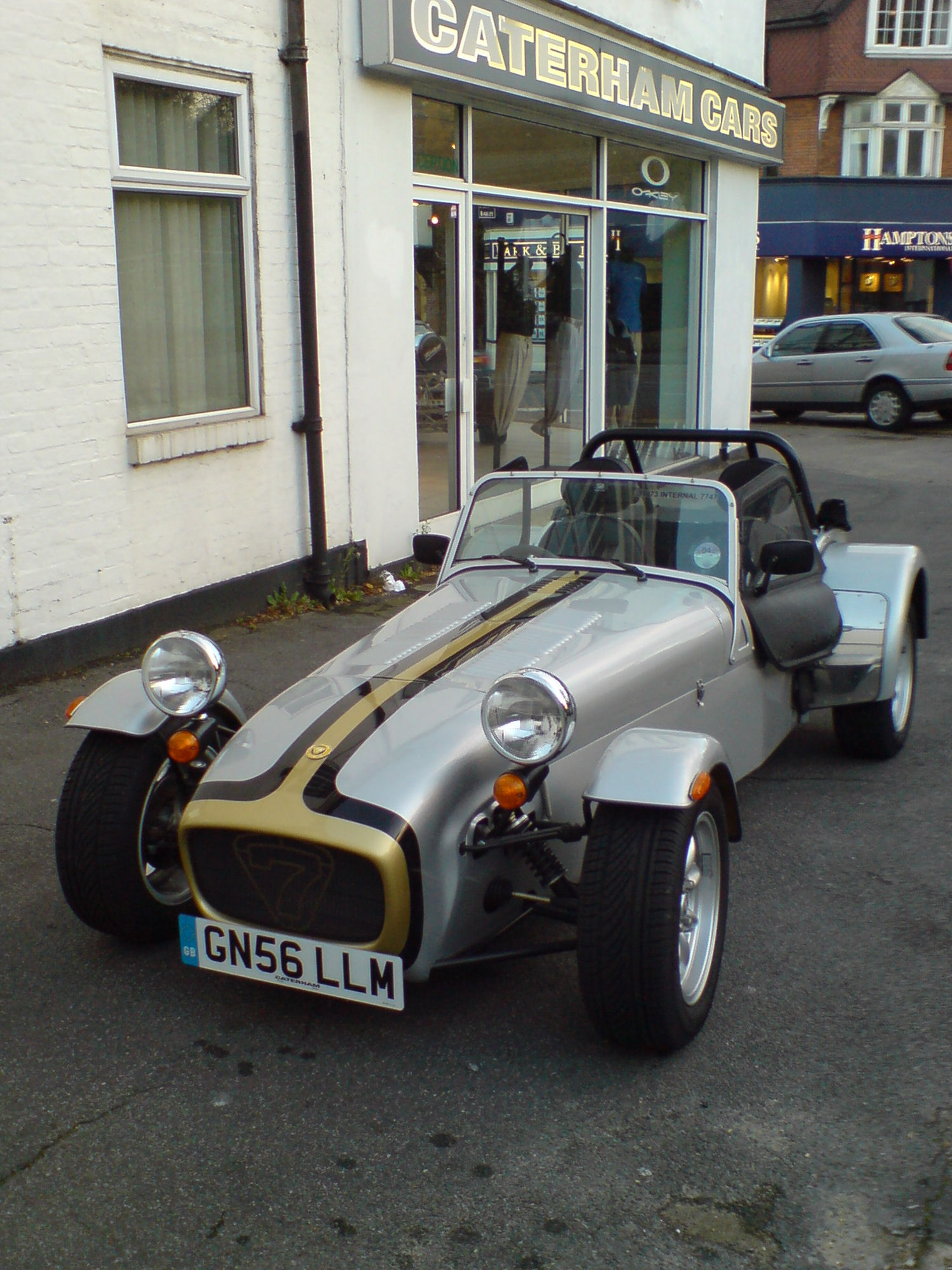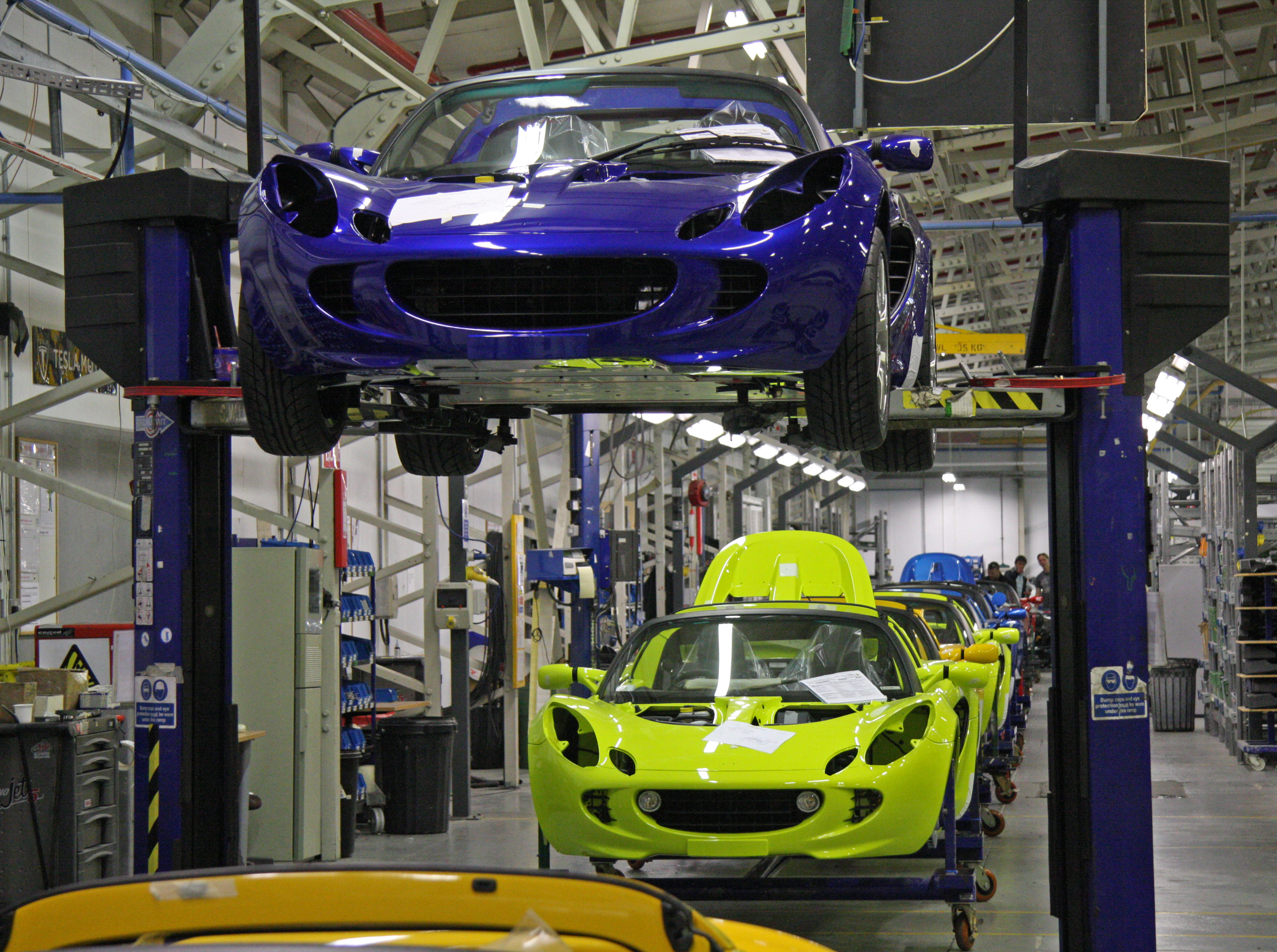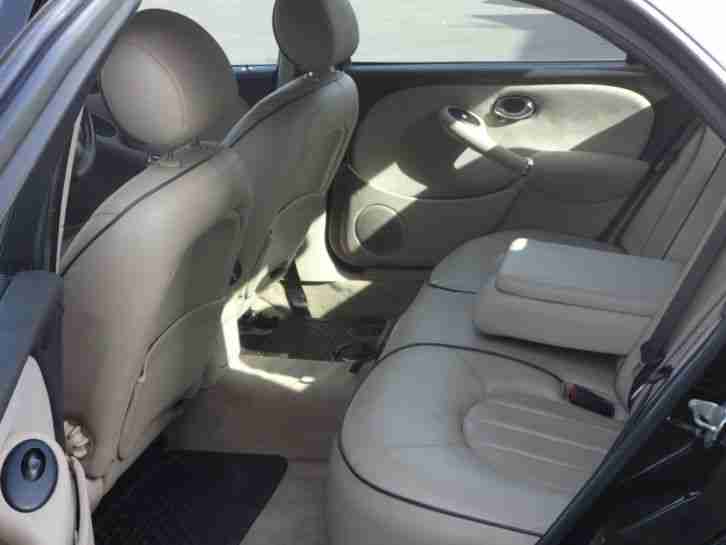|
Powertrain Ltd
Powertrain Ltd was a British company based in Birmingham which made some cars, manufactured and marketed car engines and transmissions. The company was owned by MG Rover Group and Phoenix Venture Holdings and was based in the South Works at Rover's Longbridge plant. The companies main products were the K-Series four-cylinder and six-cylinder Engines and the L-Series four-cylinder diesel engine. The company mainly produced engines for MG Rover between 2000 and 2005 but also supplied Land Rover with the L-Series and K-Series engines for the Land Rover Freelander which was developed by Rover Group in the 1990s during the ownership by BMW and British Aerospace. As well as Land Rover, K-Series engines were also supplied to many small mass production car companies like MG Rover such as FSO and SAPIA. History The company was formed as part of MG Rover Group after the sale of the Rover and MG assets from BMW to Phoenix Venture Holdings for £10.00 in 2000 when BMW broke up the Rover G ... [...More Info...] [...Related Items...] OR: [Wikipedia] [Google] [Baidu] |
Longbridge Plant
Longbridge plant is an industrial complex in Longbridge, Birmingham, England, currently leased by SAIC as a research and development facility for its MG Motor subsidiary. Vehicle assembly ended in 2016. Opened in 1905, by the late 1960s Longbridge employed around 25,000 workers, building cars including the original Mini. In the Second World War, the main plant produced munitions and tank parts, while the nearby East Works of Austin Aero Ltd at Cofton Hackett produced Short Stirling and Hawker Hurricane aircraft. Since the collapse of MG Rover in 2005, part of the site has been redeveloped for commercial and residential use. History of Longbridge car industry Foundation White and Pike: 1895–1901 The original site and factory development was undertaken by Birmingham-based copper-plate printers White and Pike Ltd. Looking to consolidate a number of small sites around Birmingham, and diversify into new areas, they chose a series of 20 agricultural fields in Northfield eigh ... [...More Info...] [...Related Items...] OR: [Wikipedia] [Google] [Baidu] |
Rover KV6 Engine
The KV6 automotive petrol engine has a 24-valve quad-cam V6 configuration, and a pressurising variable-length intake manifold to add hot spots throughout the rev range. Variants exist in capacities. These were built initially by Rover Group, then by Powertrain Ltd (a sister company to MG Rover). KIA manufactured KV6 in Korea under licence. Production moved from the UK to China in 2005, re-designated NV6. History First introduced into the Rover 800 series with the 1996 facelift, including the flagship Sterling saloon and coupe models, it has since also powered the Rover 75 and its sister car, the MG ZT, as well as the Rover 45 and the MG ZS. The engine was designed and developed by Rover at Longbridge to replace the Honda 2.7l V6 engine which was about to become non-compliant with tightening emissions legislation. The original unit was designed for low volume production but was later redesigned to fit into the smaller Rover 75's bonnet, although performance remained similar. ... [...More Info...] [...Related Items...] OR: [Wikipedia] [Google] [Baidu] |
Motor Vehicle Engine Manufacturers
An engine or motor is a machine designed to convert one or more forms of energy into mechanical energy. Available energy sources include potential energy (e.g. energy of the Earth's gravitational field as exploited in hydroelectric power generation), heat energy (e.g. geothermal), chemical energy, electric potential and nuclear energy (from nuclear fission or nuclear fusion). Many of these processes generate heat as an intermediate energy form, so heat engines have special importance. Some natural processes, such as atmospheric convection cells convert environmental heat into motion (e.g. in the form of rising air currents). Mechanical energy is of particular importance in transportation, but also plays a role in many industrial processes such as cutting, grinding, crushing, and mixing. Mechanical heat engines convert heat into work via various thermodynamic processes. The internal combustion engine is perhaps the most common example of a mechanical heat engine, in which he ... [...More Info...] [...Related Items...] OR: [Wikipedia] [Google] [Baidu] |
Defunct Manufacturing Companies Of The United Kingdom
{{Disambiguation ...
Defunct (no longer in use or active) may refer to: * ''Defunct'' (video game), 2014 * Zombie process or defunct process, in Unix-like operating systems See also * * :Former entities * End-of-life product * Obsolescence Obsolescence is the state of being which occurs when an object, service, or practice is no longer maintained or required even though it may still be in good working order. It usually happens when something that is more efficient or less risky r ... [...More Info...] [...Related Items...] OR: [Wikipedia] [Google] [Baidu] |
Caterham Cars
Caterham Cars is a British manufacturer of specialist lightweight sports cars established in Caterham, England, with their headquarters in Dartford, England. Their current model, the Caterham 7 (or Seven), originally launched in 1973, is a direct evolution of the Series 3 Lotus Seven designed by Colin Chapman. In the 1990s the company made the Caterham 21, a two-seater soft top alternative to the MGF and Lotus Elise, (which both sold many more units). A track-only car, the SP/300.R, a joint project with Lola was released for customer testing in 2010 and was scheduled for release in 2013. On 27 April 2011, Team Lotus owner Tony Fernandes announced that he had purchased Caterham. On 2 April 2021, news was leaked that Caterham Cars was acquired outright on 31 March 2021 by VT Holdings, Japanese importer for the Caterham Seven since 2009. As well as being a Caterham importer, VT also imports Lotus cars and Royal Enfield motorcycles into Japan. History Lotus origins Colin Ch ... [...More Info...] [...Related Items...] OR: [Wikipedia] [Google] [Baidu] |
Fabryka Samochodów Osobowych
Fabryka Samochodów Osobowych ( en, Passenger Car Factory), commonly known as FSO, is a Polish automobile parts manufacturer, and formerly an automobile producer of historic significance, located in Warsaw. In 2011 the factory ceased production amidst the backdrop of the global crisis, but directly as a result of GM Korea's refusal to prolong the factory's licence to produce the Aveo. GM claimed that one of the reasons for breaking the cooperation with FSO was the entry into force of the EU-South Korea Free Trade Agreement, which stipulated that import duties on cars imported from South Korea (then at 10%) were to be progressively eliminated. Since then, FSO has been producing automotive sub-assemblies. Early history The FSO plant was established in 1948 by the Communist Polish government in Żerań on Warsaw's eastern bank of the river Vistula, to produce automobiles for post World War II Poland. The first FSO car was the Warszawa which was essentially a Polish manu ... [...More Info...] [...Related Items...] OR: [Wikipedia] [Google] [Baidu] |
Lotus Cars
Lotus Cars Limited is a British automotive company headquartered in Norfolk, England which manufactures sports cars and racing cars noted for their light weight and fine handling characteristics. Lotus was previously involved in Formula One racing, via Team Lotus, winning the Formula One World Championship seven times. Lotus Cars was founded and owned for many years by Colin Chapman. After his death and a period of financial instability, it was bought by General Motors, then Romano Artioli and DRB-HICOM through its subsidiary Proton. It is currently majority owned by Chinese multinational Geely, with Etika Automotive as a minority shareholder. The engineering consultancy firm Lotus Engineering, an offshoot of Lotus Cars, has facilities in the United Kingdom, United States, China, and Malaysia. Notable Lotus cars include the Lotus Seven, the Lotus Esprit and the Lotus Elan. History Early years The company was formed in 1952 as Lotus Engineering Ltd. by engineers Colin Ch ... [...More Info...] [...Related Items...] OR: [Wikipedia] [Google] [Baidu] |
Rover 75
The Rover 75 is an executive car manufactured initially by the Rover Group and later by MG Rover, under the Rover marque and available over a single generation with front-wheel drive in either saloon/sedan or station wagon/estate configurations. Later variants included an extended-wheelbase model, and a rear-wheel drive variant with a V8 engine. In 2001, MG Rover launched a badge engineered variant, the MG ZT. A coupe concept was built, but did not receive further development. Rover 75s were manufactured by the Rover Group at Cowley, Oxfordshire, for one year. After owner BMW sold Rover, the 75 was manufactured by the new MG Rover Group at their Longbridge site in Birmingham. The Rover 75 debuted at the Birmingham Motor Show, with deliveries commencing in February 1999. As the last Rover executive sedan/saloon, production of all models ended in 2005 when MG Rover Group entered receivership. History The Rover 75 started life as part of a group of three new designs for the c ... [...More Info...] [...Related Items...] OR: [Wikipedia] [Google] [Baidu] |
MG ZT
The MG ZT is a car which was produced by MG Rover from 2001 to 2005. It was offered in saloon and estate versions, the latter designated as the MG ZT-T. Styling is similar to the Rover 75, upon which it was based, although various modifications, most noticeably the wheels and tyres, make for a far sportier ride. Production ceased in April 2005, amidst financial turmoil at MG Rover. Development history In 2001, three years after the launch of the Rover 75, and less than a year after the demerger of MG Rover from BMW, the MG ZT and MG ZT-T were launched. During the cars' development, the models were codenamed ''X10'' and ''X11'', for the saloon and estate versions, respectively. The basic shape and styling of the MG ZT remained the same as for the Rover 75 but with changes to the front bumper, now with an integrated grille, and detail alterations including colour coding of the chromed waistline, a new bootlid plinth, and different alloy wheels and tyres sizes. The interior feat ... [...More Info...] [...Related Items...] OR: [Wikipedia] [Google] [Baidu] |
MG SV
The MG SV Xpower is a sports car that was produced by British automobile manufacturer MG Rover. Manufactured in Modena, Italy and finished at Longbridge, United Kingdom, it was based on the platform of the Qvale Mangusta, formerly the De Tomaso Biguà, itself using parts from the Ford Mustang. History After acquiring Italian automobile manufacturer Qvale, MG Rover allocated the project code X80, and set up the subsidiary company, MG X80 Ltd., to produce a new model based on the Qvale Mangusta. One attraction was the potential sales in the United States, as the Mangusta had already been homologated, for the market in the United States. The MG X80 was originally unveiled as the concept car, in June 2001. However, the styling was considered too sedate. When the production model, now renamed MG ''XPower SV'', was eventually launched the following year, Peter Stevens, previously the exterior designer of the McLaren F1, had made the car's styling more aggressive. The conversi ... [...More Info...] [...Related Items...] OR: [Wikipedia] [Google] [Baidu] |
Ford Modular Engine
The Ford Modular engine is Ford Motor Company's overhead camshaft (OHC) V8 and V10 gasoline-powered small block engine family. Despite popular belief that the Modular engine family received its moniker from the sharing of engine parts across numerous Ford vehicle platforms, in reality, the Modular engine family was named as such by Ford Motor Company for the new "modular approach" to the setup of tooling and casting stations in the Windsor and Romeo engine manufacturing plants. Implementing a "modular approach" allowed for significantly faster changeovers when switching from one engine platform to another among the Modular engine family. This also allowed for the existing engine plants, and their supporting offsite production facilities, to handle shorter production runs. Implementing shorter production runs without incurring large shutdown and retooling expenses helped to increase the versatility of those production stations that required tooling or machining setups specific to ... [...More Info...] [...Related Items...] OR: [Wikipedia] [Google] [Baidu] |
BMW M47
The BMW M47 and Rover Group M47R are straight-4 Diesel engines. Variants were manufactured by BMW from 1998 to 2007. BMW gradually adopted high-pressure common rail fuel injection systems over the lifetime of the M47. M47D20 The original M47 diesel engine featured non-common-rail direct fuel injection and a block. First seen in 1998, the M47D20 produced and in its original 320d/520d guise, and with in the 318d variant. All M47 engines have one Swirl and one Tangential intake port per cylinder, which can each improve performance under different conditions. These features are not to be confused with swirl flaps, which were introduced in the M47TUD20. Applications: * and ** 2001–2003 E46 318d * and ** 1999–2001 E46 320d ** 2000–2003 E39 520d M47R Rover Group (UK) and Steyr (Austria), worked together to modify the M47D20 to create a transverse configuration for use in the Rover 75 front wheel drive saloon, as well as their all-wheel-drive Land Rover Freel ... [...More Info...] [...Related Items...] OR: [Wikipedia] [Google] [Baidu] |





.jpg)

